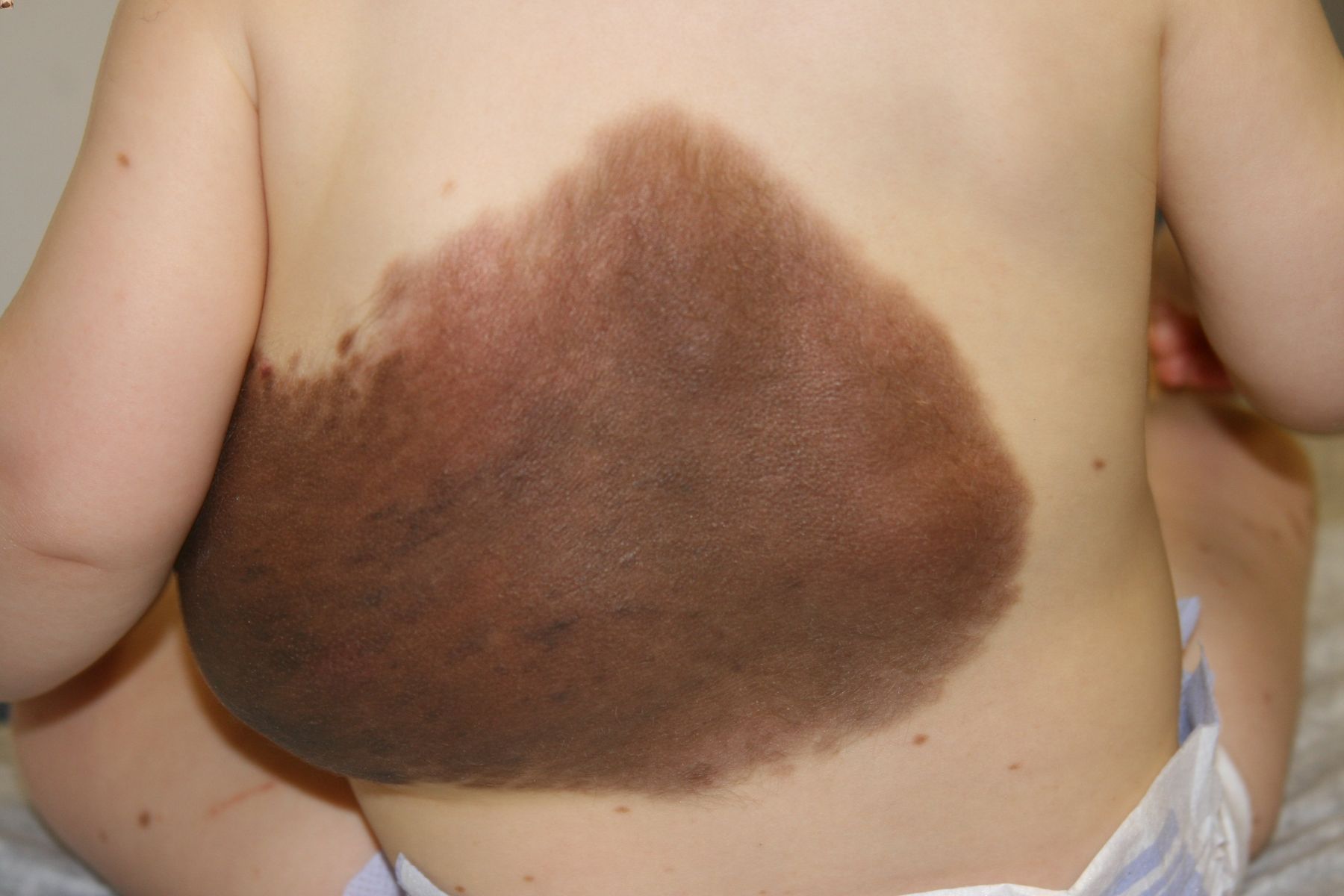
Giant congenital nevi are large, pigmented birthmarks present at birth. These unique skin features can vary in size, shape, and color, often covering significant portions of the body. But what exactly causes these nevi? They result from an overgrowth of pigment cells called melanocytes. While most are harmless, some can pose health risks, including an increased chance of developing melanoma, a type of skin cancer. Understanding these birthmarks is crucial for early detection and management. This article will provide 20 fascinating facts about giant congenital nevi, shedding light on their characteristics, potential complications, and treatment options. Whether you're curious or seeking information for a loved one, this guide offers valuable insights.
Key Takeaways:
- Giant congenital nevi are rare, pigmented birthmarks that can vary in size, color, and texture. They may pose health risks and require regular monitoring for potential changes.
- Treatment options for giant congenital nevi include surgical removal, laser therapy, and topical treatments. Living with these nevi involves sun protection, support groups, and regular skin checks.
What Are Giant Congenital Nevi?
Giant congenital nevi are large, pigmented birthmarks present at birth. These skin anomalies can vary in size, shape, and color. Here are some fascinating facts about them.
-
Rare Occurrence: Giant congenital nevi occur in approximately 1 in 20,000 newborns, making them quite rare.
-
Size Matters: To be classified as "giant," a congenital nevus must cover at least 5% of the body surface area in infants or 20 cm in diameter in adults.
-
Color Variations: These nevi can range from light brown to black. Some may even have hair growing from them.
-
Shape and Texture: They can be flat or raised, smooth or rough. Some may have a bumpy texture.
Causes and Development
Understanding the causes and development of giant congenital nevi can shed light on their nature.
-
Genetic Factors: Mutations in the NRAS or BRAF genes are often responsible for the development of these nevi.
-
Embryonic Development: These nevi form during the first trimester of pregnancy when melanocytes (pigment-producing cells) cluster together abnormally.
-
Growth Over Time: They tend to grow proportionally with the child, sometimes becoming more prominent as the child ages.
-
Hormonal Influence: Hormonal changes during puberty can cause these nevi to darken or grow.
Health Implications
Giant congenital nevi can have significant health implications, both physically and psychologically.
-
Melanoma Risk: Individuals with giant congenital nevi have a higher risk of developing melanoma, a type of skin cancer.
-
Neurological Issues: In rare cases, these nevi can be associated with neurological conditions like neurocutaneous melanosis, which affects the brain and spinal cord.
-
Psychological Impact: The appearance of these nevi can lead to self-esteem issues and social anxiety, especially in children and teenagers.
-
Regular Monitoring: Regular check-ups with a dermatologist are crucial for early detection of any malignant changes.
Treatment Options
Various treatment options are available for managing giant congenital nevi, depending on their size, location, and potential health risks.
-
Surgical Removal: Large nevi can be surgically removed, although this may require multiple procedures and skin grafts.
-
Laser Therapy: Laser treatments can help lighten the pigmentation and reduce hair growth on the nevi.
-
Dermabrasion: This procedure involves removing the top layers of skin to reduce the appearance of the nevus.
-
Topical Treatments: Certain creams and ointments can help manage symptoms like itching or irritation.
Living with Giant Congenital Nevi
Living with giant congenital nevi involves adapting to various challenges and finding ways to cope.
-
Sun Protection: Individuals with these nevi should take extra precautions to protect their skin from UV radiation, which can increase melanoma risk.
-
Support Groups: Joining support groups can provide emotional support and practical advice for managing life with giant congenital nevi.
-
Educational Resources: Educating oneself and others about these nevi can help reduce stigma and promote understanding.
-
Regular Skin Checks: Consistent monitoring and self-examinations are essential for early detection of any changes in the nevi.
Understanding Giant Congenital Nevi
Giant congenital nevi are more than just skin conditions. They carry unique challenges and risks, especially for children. Early detection and regular monitoring are crucial. These large birthmarks can sometimes lead to melanoma, a serious type of skin cancer. Treatment options vary, from surgical removal to laser therapy, depending on the size and location.
Living with giant congenital nevi requires support and understanding. Emotional and psychological impacts can be significant, so connecting with support groups and healthcare professionals is essential. Awareness and education about these birthmarks can help reduce stigma and promote better care.
By staying informed and proactive, individuals with giant congenital nevi can lead healthy, fulfilling lives. Remember, knowledge is power. The more we learn about these conditions, the better we can support those affected.
Frequently Asked Questions
Was this page helpful?
Our commitment to delivering trustworthy and engaging content is at the heart of what we do. Each fact on our site is contributed by real users like you, bringing a wealth of diverse insights and information. To ensure the highest standards of accuracy and reliability, our dedicated editors meticulously review each submission. This process guarantees that the facts we share are not only fascinating but also credible. Trust in our commitment to quality and authenticity as you explore and learn with us.
